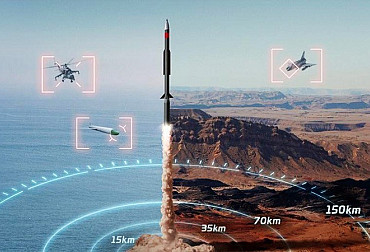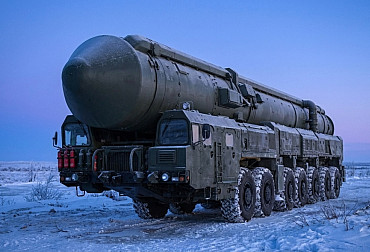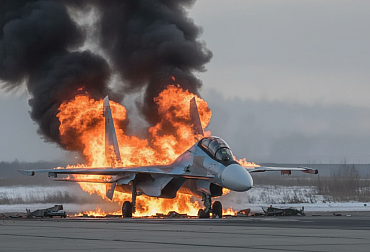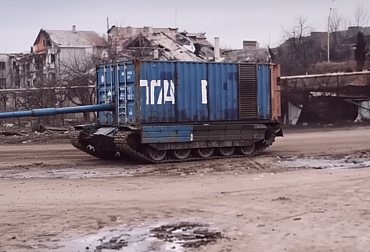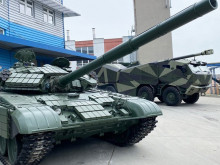Gen. Karel Řehka: The 5th generation aircraft can be counted on for at least another 40 years
Yesterday, the Chief of the General Staff of the Czech Armed Forces, Lieutenant General Karel Řehka and his team presented to journalists the reasons why the command of the Czech Armed Forces evaluated the purchase of the F-35 aircraft from Lockheed Martin as the best solution for the modernization of the Czech Air Force. At the same time, he declassified part of the document on the basis of which the government entrusted the Minister of Defence, Jana Černochová, with negotiating the possible purchase of F-35 aircraft. In addition to the Chief of General Staff, his 1st Deputy, Lt. Gen. Miroslav Hlaváč and the Commander of the Air Force, Major General Petr Čepelka, also participated in the meeting, as well as the head of the project team of the Czech Armed Forces, Brigadier General Jaroslav Míka and other military experts. The deadline for the Czech government's decision on the purchase of new modern aircraft expires at the end of September this year.
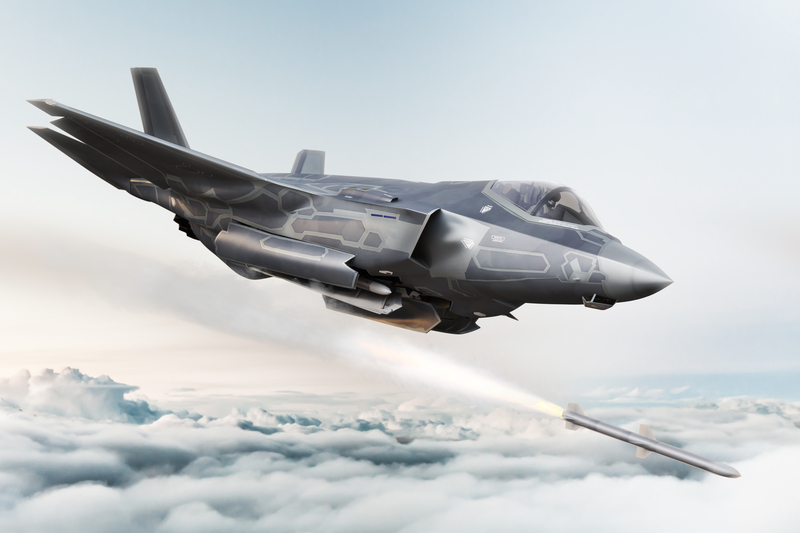 Picture: Yesterday, the Chief of the General Staff of the Czech Armed Forces, Lieutenant General Karel Řehka and his team presented to journalists the reasons why the command of the Czech Armed Forces evaluated the purchase of Lockheed Martin's F-35 aircraft as the best solution for the modernisation of the Czech Air Force. | Shutterstock
Picture: Yesterday, the Chief of the General Staff of the Czech Armed Forces, Lieutenant General Karel Řehka and his team presented to journalists the reasons why the command of the Czech Armed Forces evaluated the purchase of Lockheed Martin's F-35 aircraft as the best solution for the modernisation of the Czech Air Force. | Shutterstock
General Řehka said in his speech that the acquisition of 5th generation aircraft will bring with it the effect of a strong deterrent to the enemy, but the aircraft itself is a "game changer" on the potential battlefield due to its capabilities. He also refuted speculation about the acquisition cost, adding that while the overall operating cost is less than a quarter more, the technical level of the aircraft allows for a more efficient method of deployment. An important point is that the 5th generation aircraft can be counted on for at least another 40 years, while the upgraded 4th generation aircraft would have to be upgraded again in about 15 years.
Commander of the Air Force of the Czech Air Force Major General Petra Čepelka told CZ DEFENCE that the analytical document, which took two years to prepare, was commissioned by the former Chief of General Staff. "The assignment was that the army should address in advance the question of the future shape of the tactical air force. We identified platforms that we thought might fit within the framework of our air force and the missions we were then performing and would perform in the future. We identified seven platforms from four manufacturers: the F-15, F-16, F-35, JAS 39 Gripen, Eurofighter and Rafale. At the same time, we have also approached the Joint Air Power Competence Centre (JAPCC), a specialised NATO air power centre," said Major General Čepelka. This centre advises individual countries on how their air forces should look in relation to the tasks and commitments they have. Whether these are commitments within NATO or in relation to their own countries. "The main focus has been on the capabilities of the aircraft. That was the fundamental thing that we addressed. I have mentioned somewhere that the F-35 was far from being the most expensive aircraft in terms of equipment acquisition at that time," Major General Čepelka added.
We then asked the Commander of the Air Force Major General Petr Čepelka about the following:
What is the role of the Czech Air Force within the Alliance?
Here it is important to say what we do. It is mainly the protection of airspace. It is the protection of the sovereignty of the territory of the Czech Republic and the airspace of the Czech Republic within the framework of the national reinforcement system, within which we have the support of ground and special forces. And, of course, there are the commitments we have to NATO.
When you were considering the acquisition of the F-35, did you address, for example, what kind of aircraft or what kind of force the adversary has?
Of course. We looked at that option as well. We were discussing, we were basically evaluating the capabilities of countries that are at the opposite pole from NATO and from us. This also played a role in the decision-making process.
The F-35 aircraft emits a huge amount of data. How is the Czech Army preparing for the ability to collect and further work with the data it receives?
Sections of the Communications and Information Systems Agency, Air Force specialists, and other organisations within the Ministry of Defence are working very hard on this process. We know that data sharing is the alpha and omega that goes with this system, and of course we are addressing data sharing within the newly acquired platforms as well. Of course, we plan to procure equipment that will be compatible and will clearly work with those systems that we are procuring as part of the F-35 project. It wouldn't make sense if we were to procure an F-35 system and it wasn't being used in the way we plan to use it. We know that is a huge challenge. We have also communicated with other countries. Everybody can deal with it in some way, but it really takes cooperation across the department. I would like to emphasize here that the F-35 project simply goes beyond the Department of Defense, so collaboration is very important, whether it's with the National Cyber and Information Security Agency or other components. We are communicating very extensively with CTU, and we are also engaging other organizations outside the Department of Defense. We are looking for the optimal option that would meet what we expect from the whole process in the future.
Functional infrastructure is an integral part of the whole project. Does the Czech Republic have enough adequate capacity not only for 24 new supersonic aircraft, but also for possible allied machines, for which we should be able to provide facilities within the framework of cooperation?
Of course, we have to prepare for this option. I have already mentioned that we are looking very intensively into the use of other airports within the Czech Republic's airport network. But we also know, of course, that we will also have the possibility of landing on other territory. Now we will even have predetermined airports where we should move to. So I am not worried that we will not be able to free up some of our space for coalition partners if necessary, and that we will not be able to disperse ourselves, either in the Czech Republic or in a coalition base.
We will need new pilots and ground staff. How will the training and education take place?
In the first wave, the plan is that it would take place in the United States until about 2029, but then of course it would take place here in Europe. Those are the initial intentions. We are looking for the optimum way to train personnel within the NATO air force commanders. For example, on F-16s, for the so-called F-16 Family, there will be a European training centre in Bulgaria, and all F-16 operators and users will have the opportunity to participate in these training activities. And this is now being sought within the F-35 users, where there are several alternatives. There could be one training centre in England, for example, but there is also significant activity now by the Germans, who would have their training centre in the United States. They are buying 35 F-35s and they plan to keep about 7 of them in that training centre. There are several countries involved in that family, and we will also be discussing this option with the Germans in the future. Another option is Italy, where we would also train our personnel. We want to streamline the first and second levels of flight training here in the Czech Republic, of course, within the Air Training Centre, and we would like to train the higher levels within the international community in the future.
The acquisition of new supersonic aircraft is a very important process for the army, not only in terms of the capabilities of the new machine, but it is also a moment when, for the first time in its history, it has the opportunity to buy machines for which it can plan the life cycle long in advance.
I can say that Gripen has given us a really unique opportunity to gain experience and to fulfil the tasks that we had. There have been no major problems with the Gripen, but it is simply a fourth-generation or 4.5-generation aircraft. At the same time, with the Gripen, we have the perfect springboard to move up another notch. It's not about the capability of a particular type, it's about the technology, the capability of the whole project. And the fifth generation gives us a huge opportunity. We want to take advantage of it. So I say, Gripen is great, we have trained, we have gained a lot of experience and now it is time to take the technology one step further. And we are ready.
















